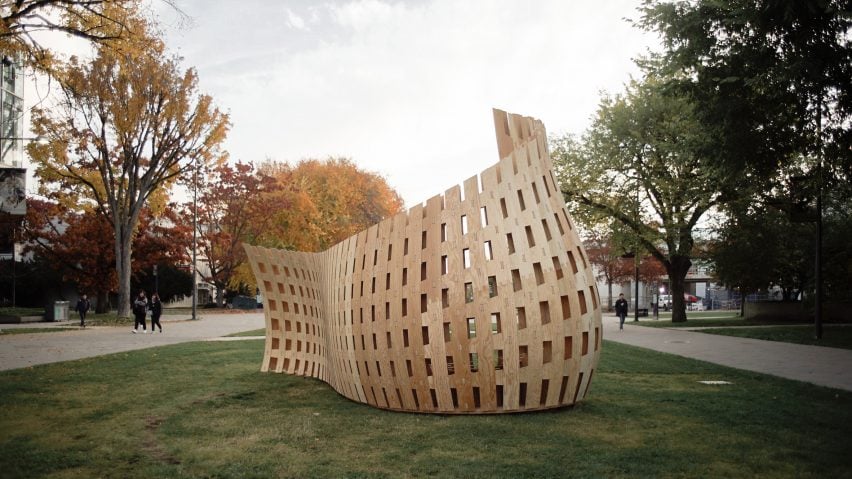
Students erect robotically fabricated wooden bench on Vancouver university campus
Robots sliced the interlocking, curved wooden slats that form this sculptural bench, which is currently installed on the campus of the Vancouver's University of British Columbia.
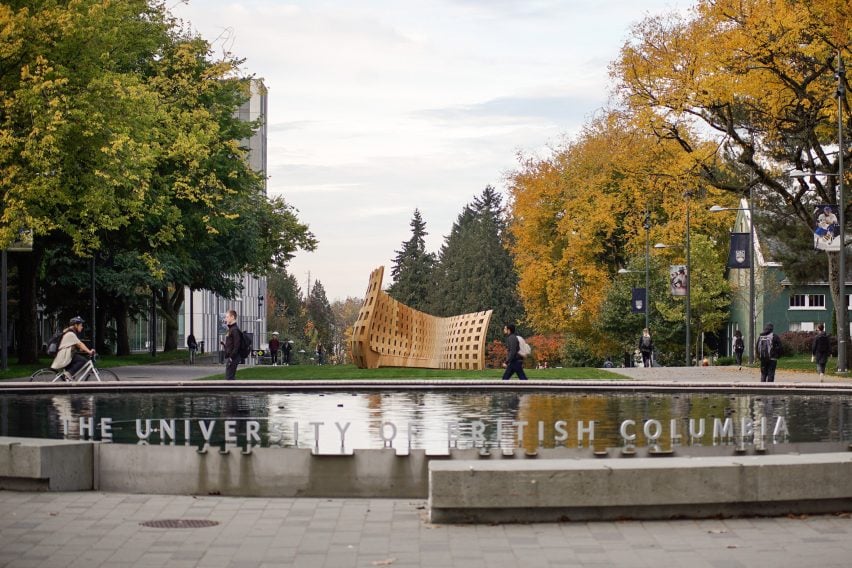
The temporary Wander Wood Pavilion was built during the Robot Made: Large-Scale Robotic Timber Fabrication in Architecture student workshop, held by the university's School of Architecture and Landscape Architecture (SALA) and Centre for Advanced Wood Processing (CAWP).
Participants included 15 architecture students and 21 external partners, who were required to fabricate and assemble a wooden installation for the university's public green using computational tools.
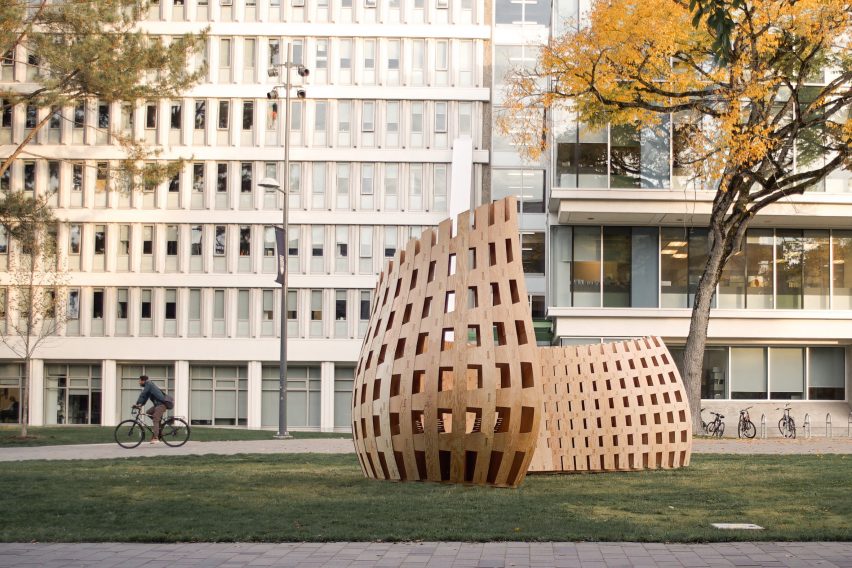
In the final design, two rows of wooden slats steadily change in shape to create the structure's outline, which curves to a peak. The exterior forms a rounded shell, partially enclosing a public bench inside.
To create this organic shape in wood, the team created a digital 3D model of the structure. This was then segmented into the individual sections that were cut using robotically controlled tools.
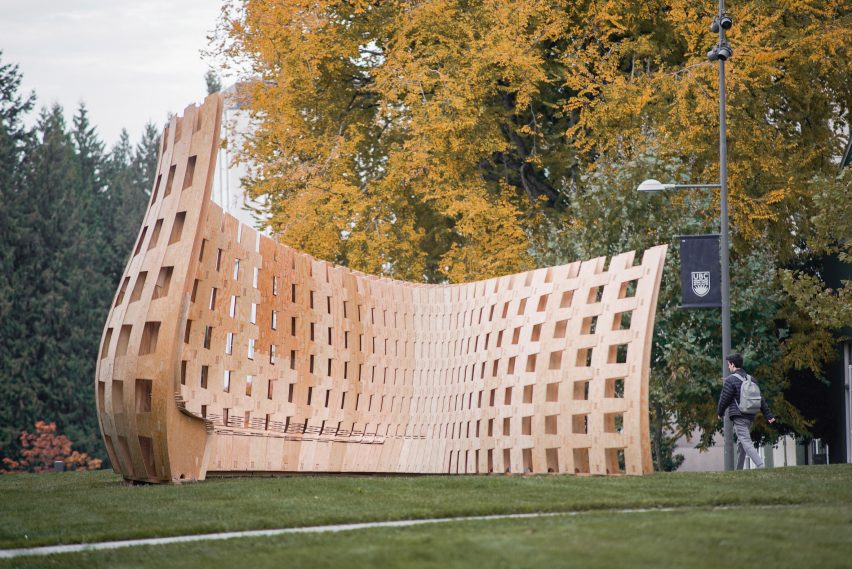
"This experimental structure demonstrates the new capabilities of the technology to develop innovative material applications that harness the unique properties of wood to animate public spaces," said the team in a project description.
"Wood is a natural partner for these technologies because of the ability to easily mill and shape it with robotically controlled cutting tools."
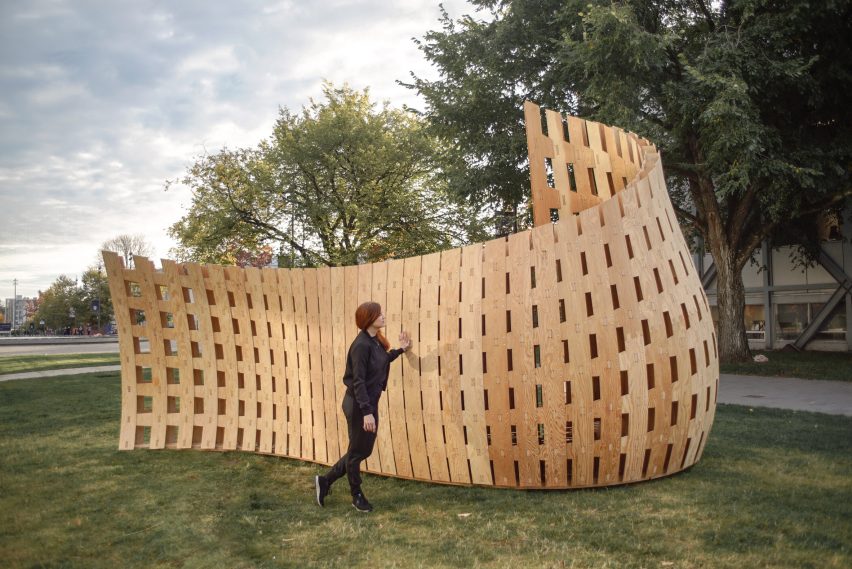
Two rows of the wooden slats are pieced together to form the structure, with the outer layer bending inwards and then outwards. Wooden teeth on each section overlap so the pieces can be screwed together.
"The pavilion was assembled by using interlocking components in combination with 2,200 rivets," University of Waterloo architecture professor David Correa, who co-led the build, told Dezeen. "The whole installation was built at the Advanced Wood Processing centre indoor wood shop and then moved in sections to the site."
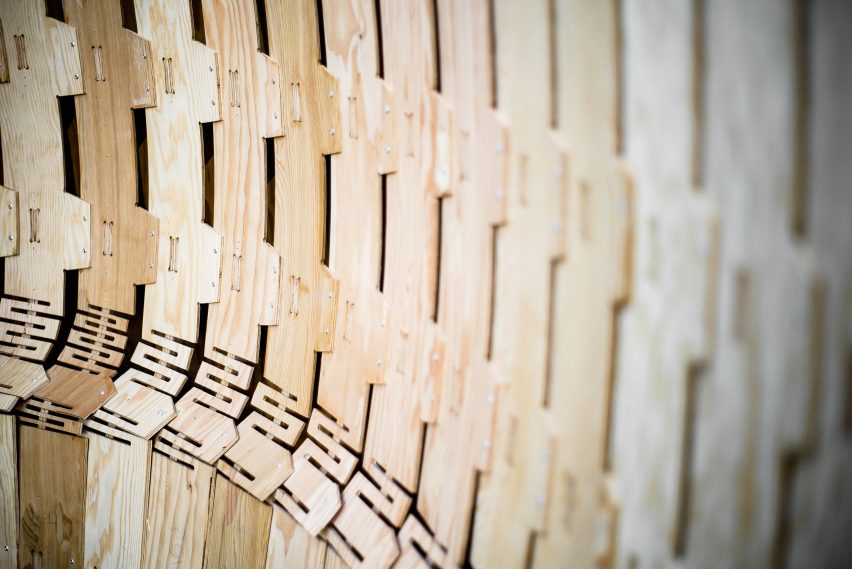
The interior gradually introduces a curve that forms the bench for members of the public to rest. The slats are segmented at the base into zig-zagged sections in order to include this feature.
Correa, who is also the co-founder of IILab, led the Robot Made workshop build with SALA professor AnnaLisa Meyboom, and Oliver David Krieg of Lang Wilson Practice in Architecture Culture – who is a computational design and digital fabrication specialist – from 13 to 18 October 2018. The Wander Wood Pavilion is intended to stay up for a year, depending on the weather.
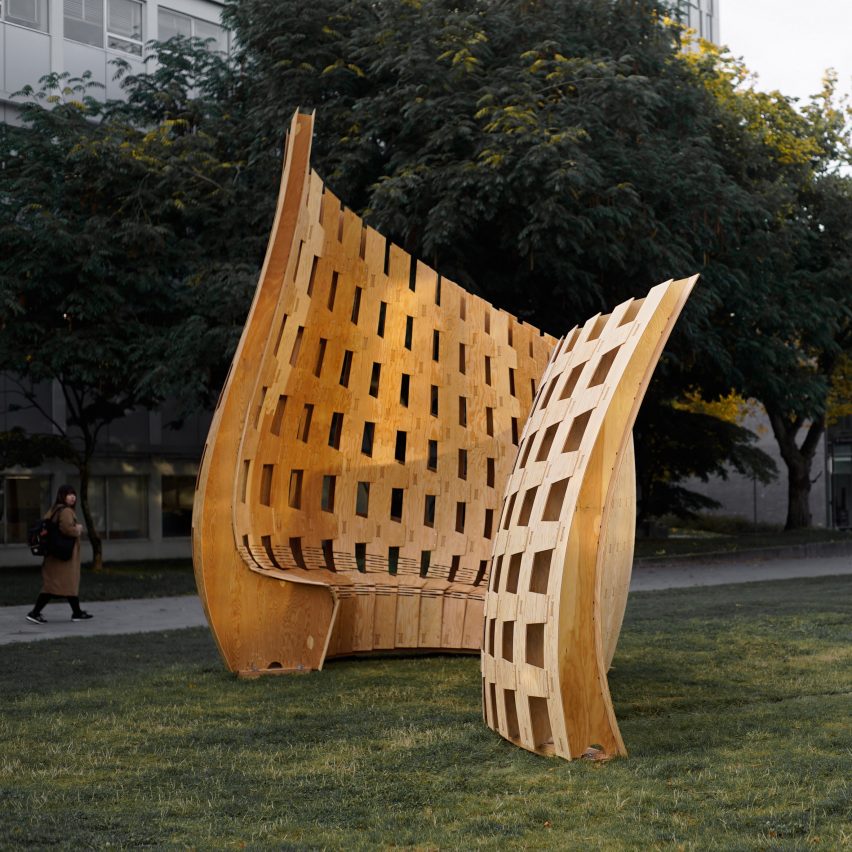
It is intended as one of several outputs developed by the team using the same fabrication system. The overall goal is to show how timber construction can be adapted to create a variety of structures using robotic technology, while championing sustainable production.
"Wood is highly sustainable – not only is it a renewable resource but it also stores carbon – making it one of the most sustainable building materials in the world," said the team.
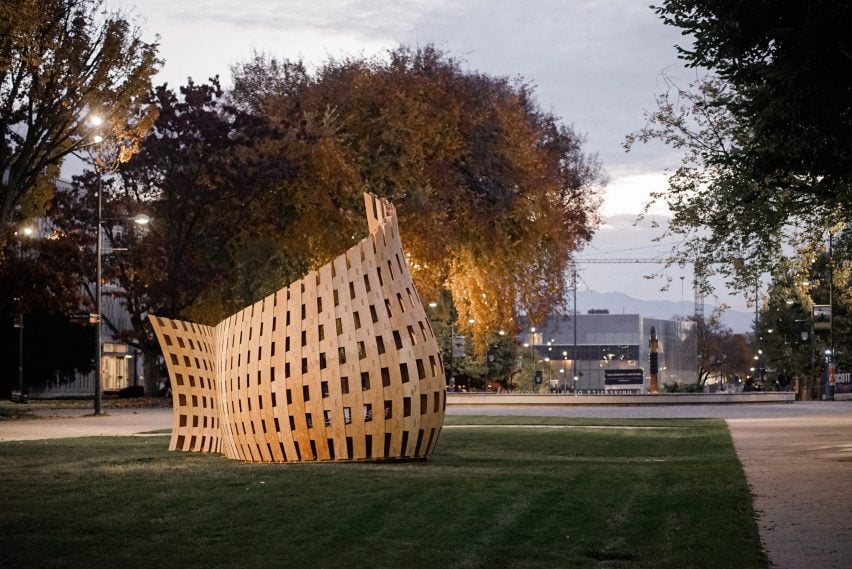
Small, temporary structures like the Wander Wood Pavilion are an easy and quick way for students to work with new techniques like robotic construction.
Others that have also experimented with this technology include a team at ETH Zurich, which created a drone-woven structure suspended in the air, and a group from the University of Stuttgart, which employed robots to mould and stitch together a laminated plywood pavilion.